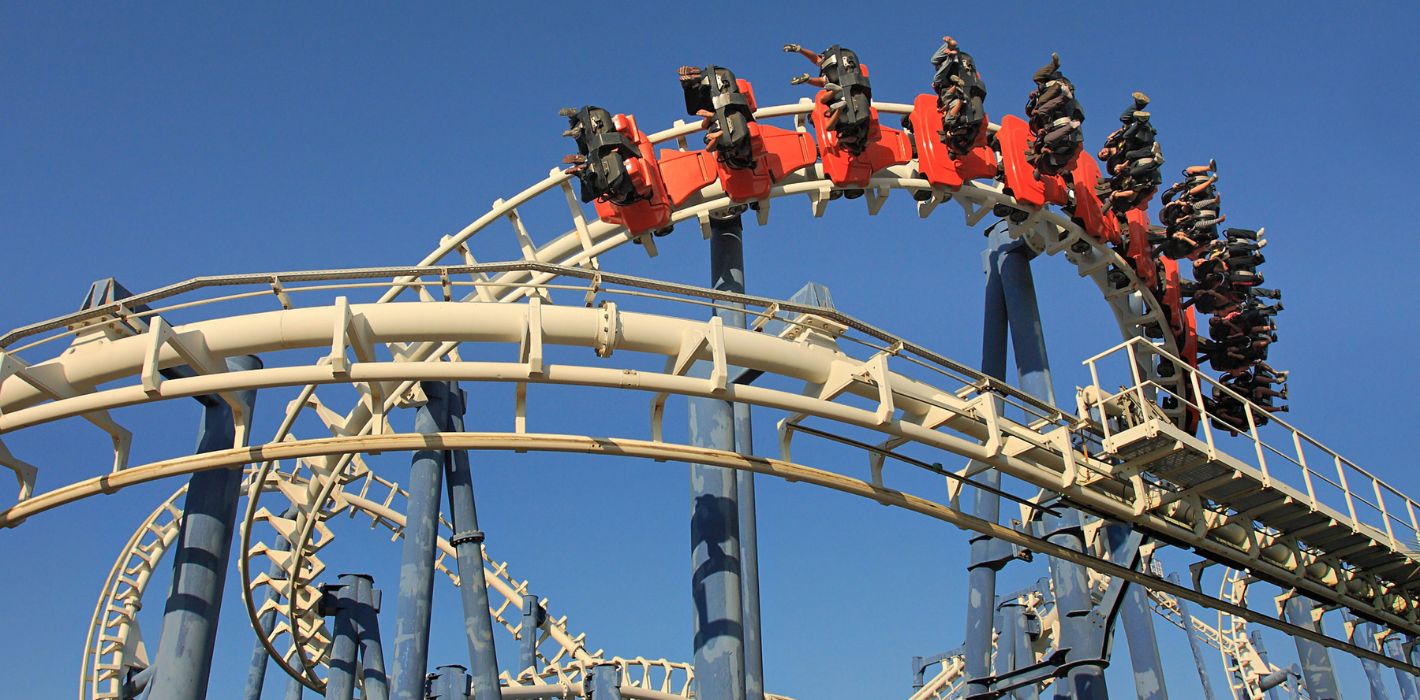%20(12).png)
- The extreme coaster boom peaked in the 2000s, but those rides are now less common due to costs and changing demographics.
- Millennials are driving a shift toward family-friendly, low-intensity rides that prioritize inclusivity and shared experiences.
- Coasters aren't dead — they're just evolving to meet the tastes of a new generation of theme park goers.
From G-Forces to Family Fun: The Roller Coaster Revolution
Ah, roller coasters. Those twisted steel giants that used to rule the skyline of every major amusement park. I still remember white-knuckling my way through Six Flags' Goliath, eyes watering from speed, stomach in my throat, wondering if I had made a terrible life choice. That was peak 2000s. Back then, roller coasters were in an arms race — tallest, fastest, most inversions, most chances of losing your lunch.
And then, suddenly… it all slowed down.
Now, I know the title’s spicy. But let’s talk about how we, the millennial generation (yes, I’m owning this), kind of… broke roller coasters. Or at least rewired them.
The Glory Days of G-Force
In the late ‘90s and early 2000s, roller coaster design was pure chaos — the good kind. You had beasts like Millennium Force and Superman: Escape from Krypton pushing physical limits. It was like every park CEO woke up and said, “I want to induce near-blackouts on every corner.”
But this thrill war wasn’t sustainable.
The ride construction costs ballooned. The safety measures got more complex. And maybe most importantly, only a small, specific group actually wanted to ride them — namely, teens and coaster-heads chasing adrenaline like it was a drug.
Then came the shift.

Enter Millennials… with Kids, and Anxiety
Let’s be honest — we millennials got older. Our knees crack now. We have kids, back pain, and an increasingly fragile relationship with gravity. Instead of chasing the scariest ride, we want stuff the whole fam can enjoy. We like experiences — sure — but not the ones that involve emergency barf bags.
It’s no coincidence that after the coaster boom, theme parks pivoted hard. We started seeing more “family coasters” and less “scream machines.” Parks like Disney doubled down on immersive, gentler rides (hello, Rise of the Resistance), and even Six Flags — long the church of thrill — began marketing toward families with chill rides and dining experiences instead of just teenage chaos.
The Numbers Don't Lie
According to coaster databases (which are a thing — shout out to the geeks doing the Lord’s work), new coaster construction didn’t stop. But the types of coasters changed. Since the mid-2000s, a growing proportion of new coasters in the U.S. have height restrictions under 48 inches — aka, designed for kids and nervous adults (me).
We’re still building lots of coasters — just not the kind that turn your spine into spaghetti.
💸 Why the Shift Makes Sense
Theme parks are businesses. Big coasters cost tens of millions to build, and even more to maintain and insure. Plus, their return on investment started dipping. Why spend $30 million for a 300-foot monster when you can spend half that for a family coaster that grandma and the kids can ride?
Millennials are now the ones buying the tickets, planning the vacations, and shelling out for overpriced turkey legs. Parks followed the money. Simple as that.
The Psychology Behind the Pivot
Thrill rides are exclusive by design — they only appeal to a niche demographic. Family coasters? Inclusive. Accessible. Shareable. In the era of Instagram and “let’s make memories,” rides became less about screaming your lungs out and more about laughing with your 5-year-old while going 25 mph on a tiny train shaped like a dragon.
It’s not just about physical comfort — it’s emotional appeal. The coaster wars of the past were for records. Today’s rides are for stories.
The Tech Is Still Cool, Don't Worry
If you’re worried that all the innovation’s gone — don’t be. Coaster companies are still out there inventing wild new ride systems, like SNS’s Axis Coaster which spins side-to-side on a moving track. These things can still get intense. But now they’re modular — meaning the same ride can be tweaked to thrill or chill, depending on the park’s audience.
Did We Ruin Them?
Okay, “ruin” is a strong word. Let’s say remixed. Millennials didn’t destroy roller coasters. We just forced them to grow up with us. We traded record-breaking heights for memory-making nights. We shifted from individual adrenaline to shared experiences.
We made coasters… cozy.
And hey, I might not be able to handle 5Gs anymore, but if you give me a gentle drop, a great soundtrack, and maybe a churro afterward — I’m in.
Whether you're a coaster junkie or a designated stroller pusher, the theme park world has something for you — just maybe not the same thing it had in 2005. And that’s not a bad thing.
Stay buckled in for more geeky theme park evolution with Land of Geek Magazine!
#millennials #rollercoasters #themeparks #geekculture #familyrides





